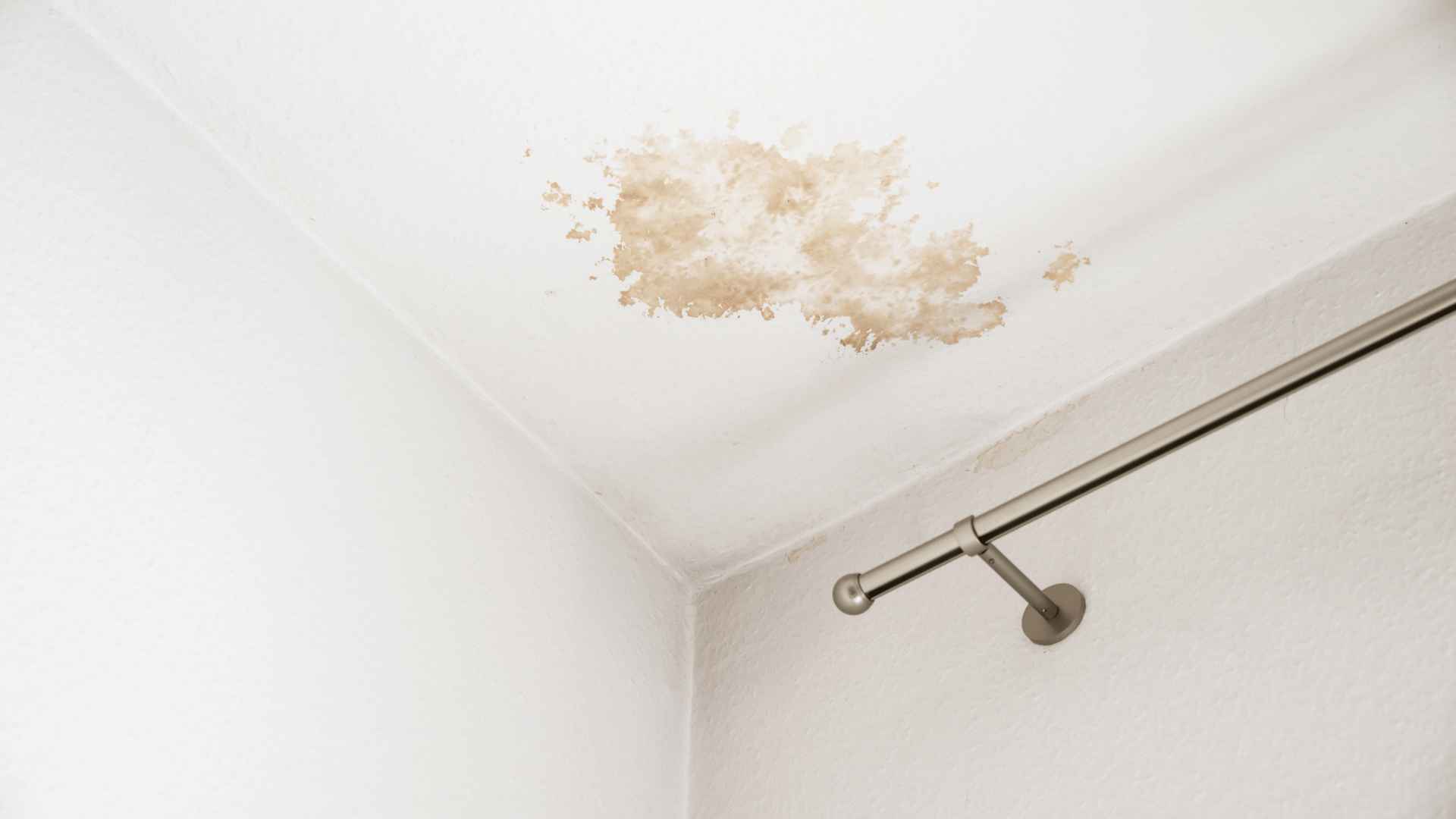Ceiling water damage, a frequently encountered problem, emerges when water breaches the structural integrity of a building's ceiling. This insidious issue not only leaves behind unsightly stains that mar the aesthetic appeal of space but can also lead to severe structural complications over time. The infiltration of water weakens the materials that make up the ceiling, potentially compromising its stability. Moreover, when left unaddressed, ceiling water damage can create an ideal environment for mold and mildew growth, posing health hazards for occupants. The silent progression of this problem underscores the importance of early detection and swift, effective solutions to safeguard both the structural integrity of the building and the well-being of its inhabitants.
Several instances can cause ceiling water damage, and understanding these causes is crucial for effective prevention and repair.
Here are some common causes of ceiling water damage
1. Roof Leaks - Damaged or improperly maintained roofs are a primary source of ceiling water damage. When rainwater or melting snow enters through roof openings, it can seep into the ceiling, causing extensive structural damage over time.
2. Plumbing Leaks - Leaky pipes or plumbing fixtures in the floors or walls above the water-damaged area can result in water infiltrating the ceiling below. This type of damage may not always be immediately visible, but it can worsen over time.
3. Overflowing or Malfunctioning Appliances - Appliances such as washing machines, dishwashers, or water heaters can malfunction or overflow, causing water to saturate ceilings below them.
4. Condensation - In areas with high humidity or inadequate ventilation, condensation can form on ceilings, leading to water damage. This is especially common in bathrooms and kitchens with wet floors.
5. Storm Damage - Severe weather events, such as heavy rain, hail, or snowstorms, can compromise the integrity of a building's roof, leading to leaks and subsequent ceiling water damage.
6. Cracks and Gaps in Drywall - Aging or poorly constructed buildings may develop cracks or gaps in the ceiling's drywall, allowing water to penetrate during rain or flooding.
Solutions for Ceiling Water Damage
Addressing ceiling water damage promptly is essential to prevent further deterioration and mold growth on water-damaged ceilings. Here are some solutions for a water-damaged ceiling:
Identify and fix the source of the entire ceiling.
Identifying and addressing the root cause of water infiltration is the crucial first step in mitigating ceiling water damage. If the issue stems from a leaky roof, a thorough inspection of the roof's condition should be conducted, and necessary repairs or replacements should be undertaken promptly.
In cases involving plumbing issues, such as pipe leaks or faulty fixtures, it's essential to identify the specific source of the problem and engage a plumber to fix it. Similarly, when malfunctioning appliances are to blame, immediate attention should be given to repairing or replacing the faulty unit.
An inspection of the roof itself may be necessary to locate a missing shingle or damaged roof vent that's allowing water to flow into the attic. It's absolutely vital that you locate the source of the water, however, or you'll not be able to solve the cause of the water damage and you'll simply keep making the same repair over and over again.
By tackling the underlying cause of water infiltration, you not only prevent further damage to your ceiling but also eliminate the potential for recurrent issues that can be costly and disruptive.
Ceiling Repair: Water Damage
The extent of ceiling water damage can vary greatly, and the necessary repair measures should be tailored to the severity of the issue. In cases of minor water damage where the affected area is limited, it may be possible to dry and restore the ceiling without significant replacement. However, for more extensive damage, the repair process often involves removing the compromised materials, such as waterlogged drywall or plaster.
This removal is crucial to preventing mold growth and ensuring a stable and safe ceiling structure. After removal, replacement materials are carefully installed to show water stains and restore the ceiling's integrity. This step may also present an opportunity to improve insulation or address any underlying issues that contributed to the water damage, enhancing the overall resilience of the ceiling against future water infiltration.
Consulting with a professional contractor is advisable for complex ceiling repairs to ensure they are carried out effectively and safely.
Mold remediation or damaged drywall
Keep in mind that it's often easier to simply remove the damaged section of drywall and replace the drywall panels and material. This often exposes ceiling joists, which makes hanging patches easier. The same goes for painting, as it's often easier to feather new paint into a larger area completely dry, or even paint the whole ceiling, in the case of a larger leak.
When mold has developed as a result of water damage, taking prompt and cautious action is paramount to safeguarding your health and preventing further contamination. Mold spores can be harmful when inhaled, potentially causing respiratory issues and allergic reactions. If you discover mold in your home, follow these steps:
First, protect yourself by wearing appropriate gear, including gloves, a mask, and safety goggles, to minimize exposure to mold spores.
Then, isolate the affected area from the rest of the house to prevent the spread of mold spores and ensure good ventilation by opening windows and using fans to expel mold spores outdoors.
For small, manageable mold infestations, you can clean the affected surfaces with a mixture of water and mild detergent, but avoid using bleach, as it can release harmful fumes and may not be effective for all types of mold.
If the mold infestation is extensive or if you have health concerns, it's advisable to consult mold remediation professionals who have the expertise and equipment to safely remove the mold and prevent its recurrence.
Additionally, don't forget to identify and fix the water source and the water damage to prevent future mold growth. Whether it's a leaky roof, a plumbing issue, or other sources that absorb water, thorough repair is essential for a healthier and more mold-resistant living environment.
Improve ventilation on a water-damaged ceiling.
Improving ventilation in high-humidity areas like bathrooms and kitchens is a proactive measure to mitigate the risk of condensation-related ceiling water damage. These areas are particularly prone to excess moisture, which, if left unchecked, can lead to structural problems and mold growth in the ceiling. To combat this issue, consider installing exhaust fans or range hoods that effectively remove humid air and odors from these spaces. Ensure these ventilation systems are properly maintained and in good working condition.
Additionally, keeping bathroom doors closed during showers and using lids on cooking pots can help contain moisture in these spaces. Adequate airflow through open windows or vents can further assist in reducing humidity levels in affected areas. By addressing humidity in high-risk areas, you can significantly minimize the likelihood of condensation-related floor and ceiling water damage, preserving the integrity of your home.
Regular maintenance, the priming and painting process, and do-it-yourself repairs
Preventing future ceiling water damage is not only cost-effective but also essential for maintaining a safe and comfortable living environment. To achieve this, conducting regular inspections of critical areas within your home is paramount. Start with your roof, which is the first line of defense against water infiltration. Inspect it for missing or damaged shingles, signs of wear, and any potential points of entry for water. Address any issues promptly, as a well-maintained roof is crucial to preventing water damage.
Next, focus on your plumbing systems. Check for leaks, drips, or any signs of water damage around pipes, fixtures, and appliances. Regularly inspect and maintain these systems to ensure they function properly and remain leak-free.
Lastly, pay close attention to your appliances, such as washing machines, dishwashers, and water heaters. Ensure they are in good working condition, and replace any worn-out hoses or components that could lead to leaks or overflows.
Use sandpaper to smooth any ridges and bumps that have been left. Then continue by filling all the small holes with a joint compound, letting it dry completely, and then smoothing it down again. For the other times when you cut out and repair the damaged areas of the drywall, measure the size of the hole and then cut out a new piece of drywall 2 inches wider and longer than the previous hole.
By conducting routine inspections and addressing issues promptly, you can proactively prevent ceiling water damage and avoid the costly repairs and potential health hazards that come with it. This preventive approach not only protects your investment but also provides peace of mind, knowing your home is safe and secure from any water leak-related issues.
Ceiling water damage can result from various instances, and its effects can range from cosmetic issues to serious structural problems. Understanding the causes and taking proactive steps to prevent and address water damage is key to maintaining a safe and comfortable living environment.
For more information on Vista Residences, email [email protected], follow @VistaResidencesOfficial on Facebook, Twitter, Instagram, and YouTube, or call the Marketing Office at 0999 886 4262 / 0917 582 5167.










